The floating islands of Uros and Isla Taquile
It was time to get back out on Lake Titicaca – this time on the Peruvian side, where we were going to check out some more islands.
There are a few different islands in the Peruvian part of Lake Titicaca, but the most commonly visited and easiest to get to are the Islands of Uros, and Isla Taquile. These can both be visited on a day tour from Puno – so that’s what we did – starting bright and early at 7am. We would soon discover that 7am isn’t actually that early in Peru…..! 🙂
Once aboard our boat, we noticed straight away the differences between the Peruvian boats and the ones in Bolivia – first of all, there was a toilet on the boat! 🙂 Yes, you know now how important it is for us to keep track of the toilet locations 🙂 These boats also travelled at double the speed of the Bolivian ones, and had a PROPER LADDER to get on the roof part of the boat (instead of having to scramble up the side of the boat), and a small outside area at the back.
Our first destination was the floating islands of Uros, where we would make stops at two different islands. We had heard that these islands were massive tourist traps and ‘unauthentic’ – so we were prepared for the worst…
The islands are home to the Uros people – who have been around for a long, long time – at least 800 years, and maybe thousands of years – nobody really knows. The Uros used to have their own language, but around 500 years ago they started speaking Aymara, the same language that was used by the people on the mainland who they traded with. They still practice a lot of the same customs that they always have, and they are famous for living on islands that are made out of reeds that actually float on Lake Titicaca.
Their income is now supplemented by tourism, and apparently a lot of families now actually live on the mainland and come to the islands just for the tourists…. BUT to me, it was clear that there is still a community that lives on these islands and carries on their traditional way of life – but understandably, they don’t want tourists running all over the place on their floating islands gawping at them, so access is quite tightly controlled. The tours visit a ‘family’ island, and then the ‘main’ island. The ‘family’ islands take it in turns to receive tourists, so they get a break.
In theory, each extended family (or couple of families) builds and lives on their own very small floating island. When you visit one of these, you can see their living quarters and they explain all about their culture, how the islands are actually made, and so on. I wouldn’t be surprised if many of these small family islands are not really lived on any more – they are tiny and uncomfortable, and it’s only 45 minutes by boat to the mainland! I would probably choose to live on the mainland and come to my island for ‘work’ (eg – showing the tourists) ! 🙂
But they still have to actually make these islands out of reeds, and it was really interesting to hear about how the islands are made, traditional practices and so on. To me it was like an amazing interactive museum – it didn’t really matter if they still lived on their island or not.
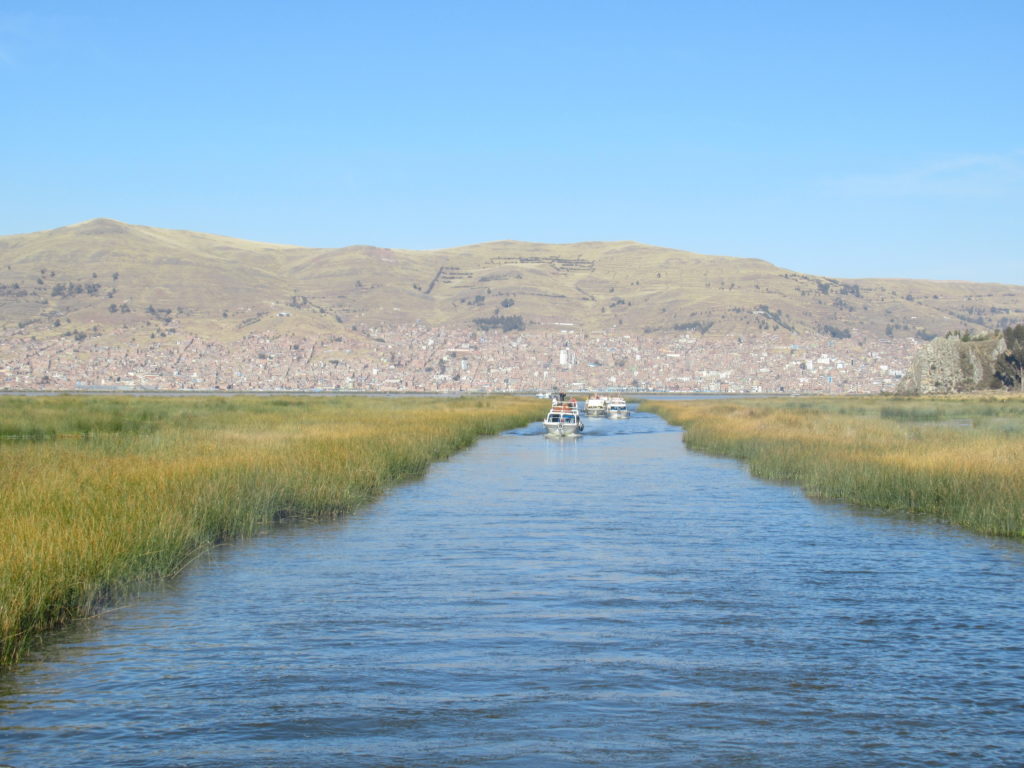
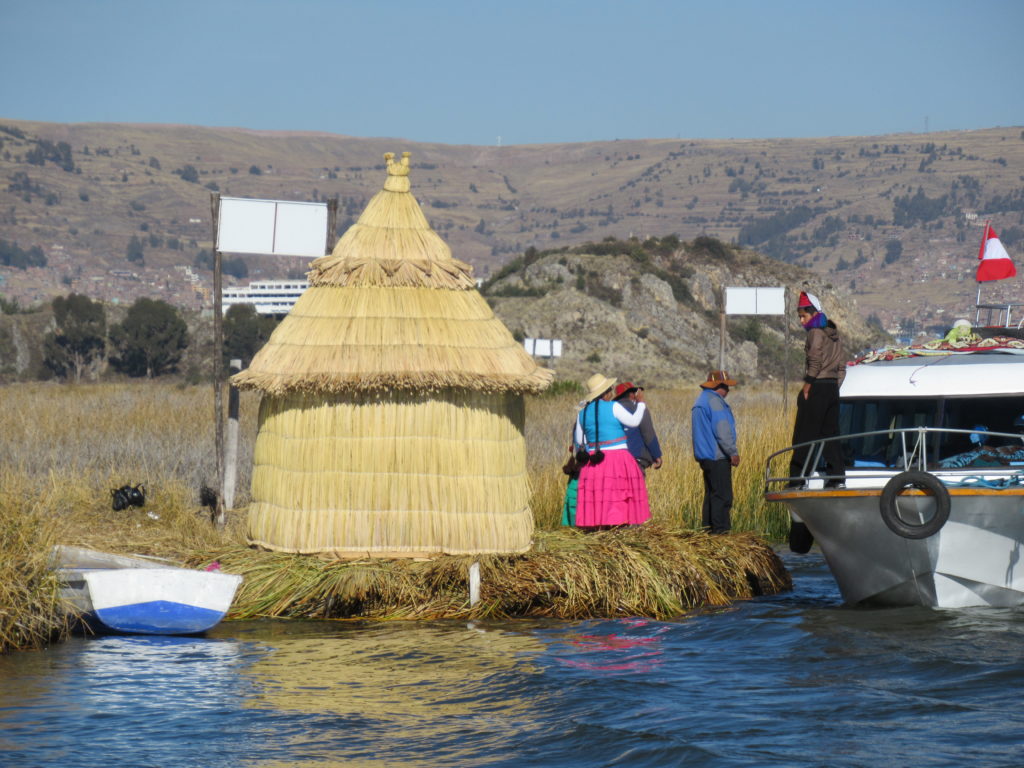
When we arrived at the first island, the family that lived there gave us a talk about various aspects of Uros culture. The most fascinating part is about the floating islands themselves – they do actually float, and have to be anchored down to stop them floating away. They are made of Totora reeds
The reeds have very thick, tangled roots, so they cut blocks of reeds out of the lake and join them together to make the islands. The reeds at the bottom of the island that are touching the water rot away quite quickly, so they constantly add reeds to the top of the island. Walking on the island was a pretty weird experience, as you can feel it sink a bit each time you walk on it. They had a covered hole in the island which they could lower a stone on a string through, so they could measure the depth of the lake where their island was floating (in this case, it was 12 metres deep).
The reeds are an integral part of their lifestyle and culture – as well as using them for building islands, they eat parts of them, build boats with them, and make tea with them.
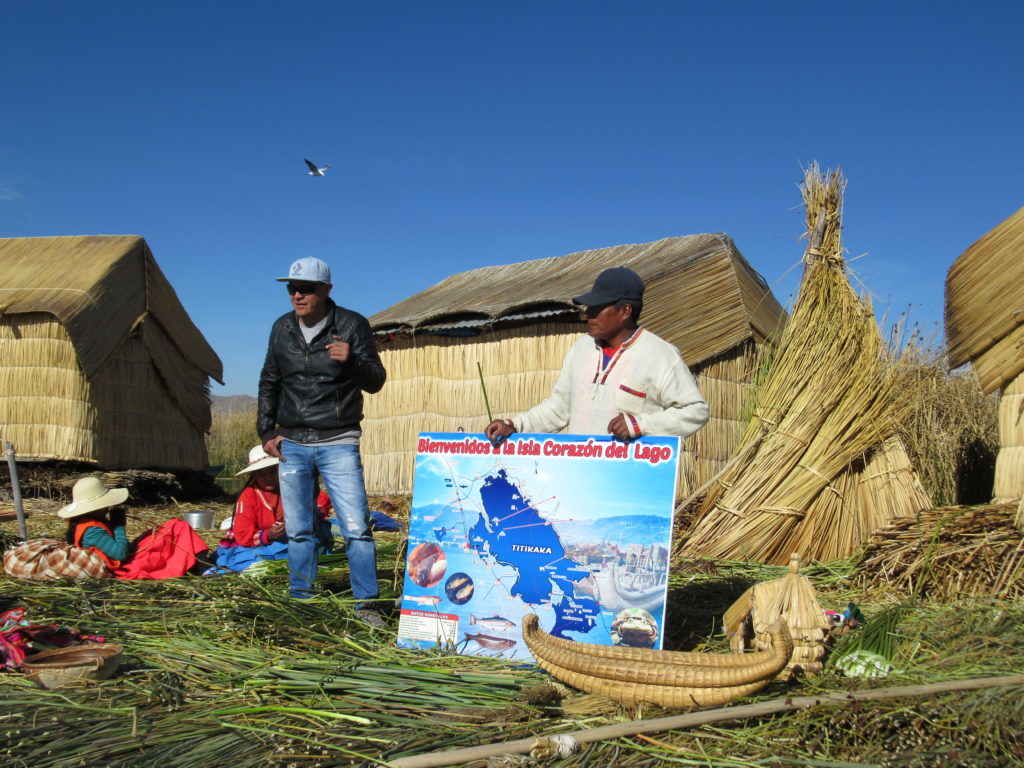
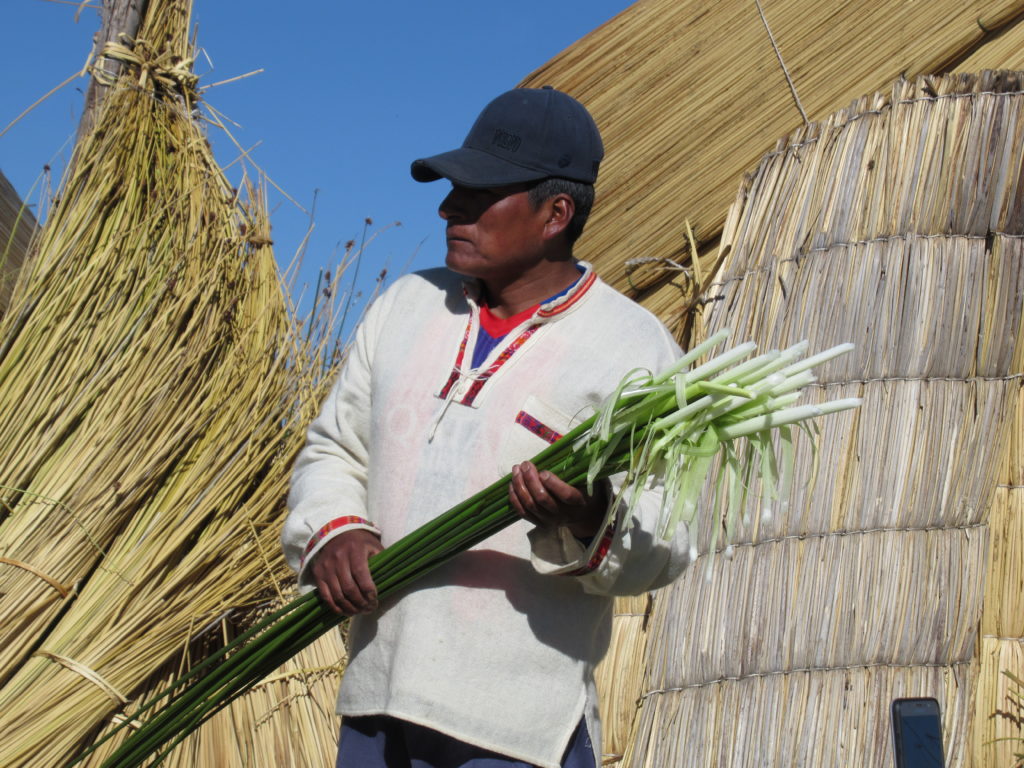
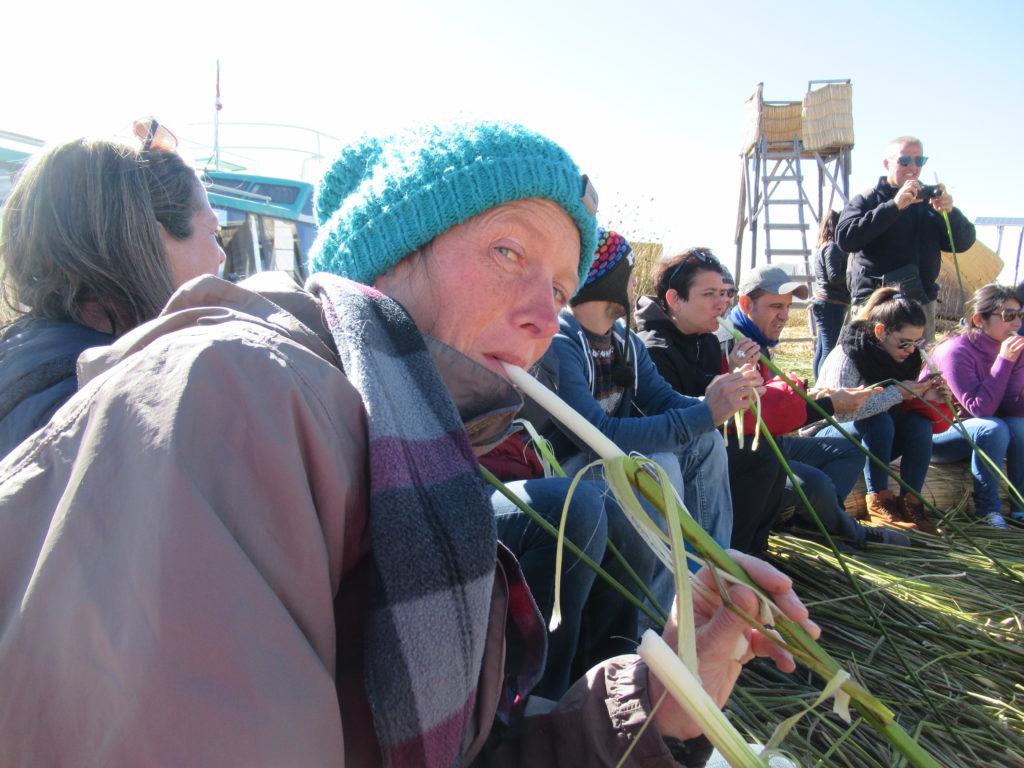
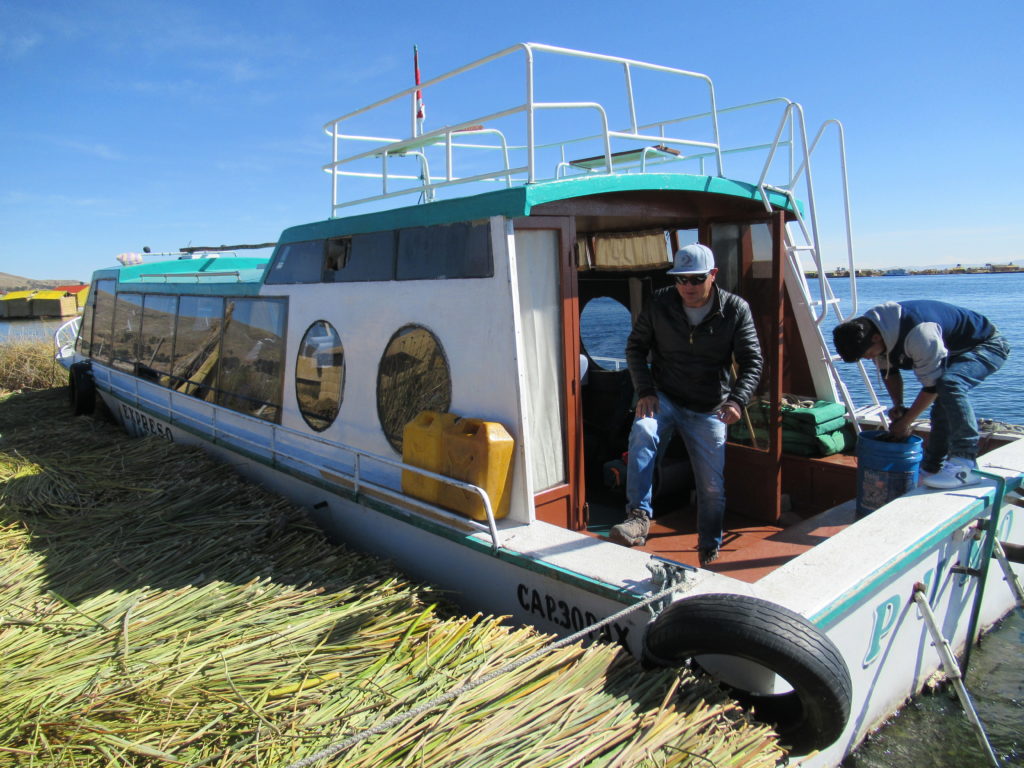

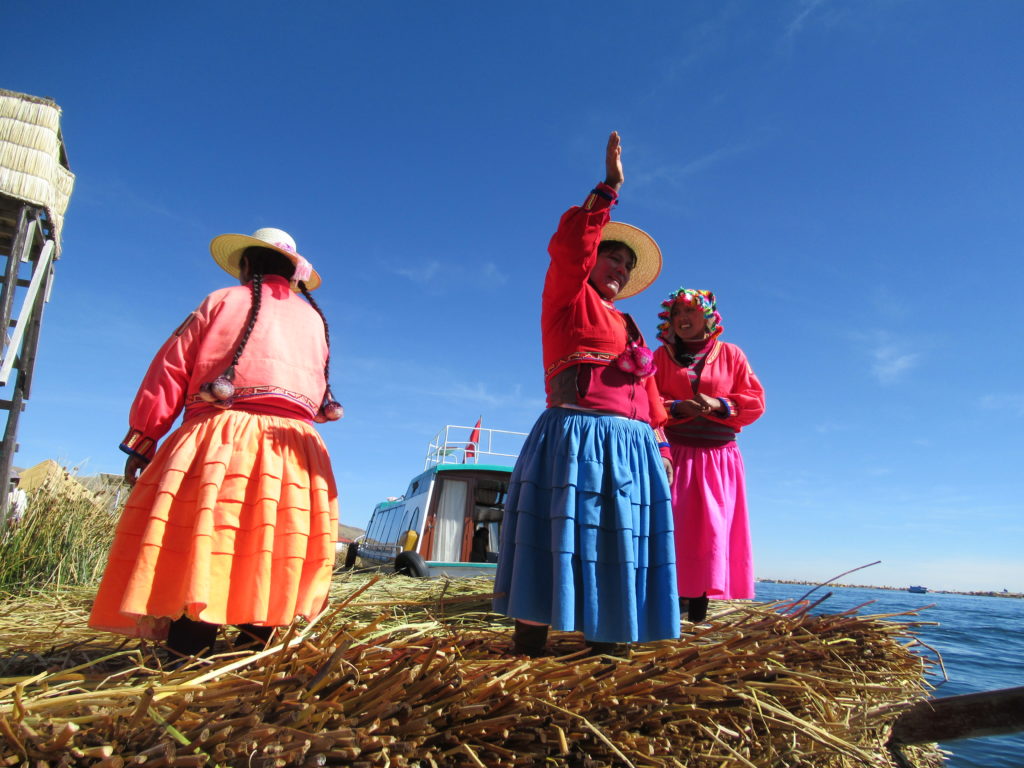
We had an option to leave the family island on a traditional boat made of reeds, instead of on our tour boat – for a small extra charge of course 🙂 – we figured that we may as well be proper tourists while we were out here, so off we went in the reed boat! 🙂
Our next stop was the main island of Uros, which contains shops, schools, a hospital, and a radio station amongst many other things. This stop was a bit of disappointment, as we didn’t really get to see anything on this island, or have any time to wander around. We were dropped off by a snack bar and stalls selling handicrafts. The most exciting thing to happen on this island, was that a tourist followed a very grey, worn out looking path, and his foot went straight through the island and made a big hole – he got his whole leg soaked…. always remember that you are walking on a bunch of reeds tied together…… 🙂 🙂
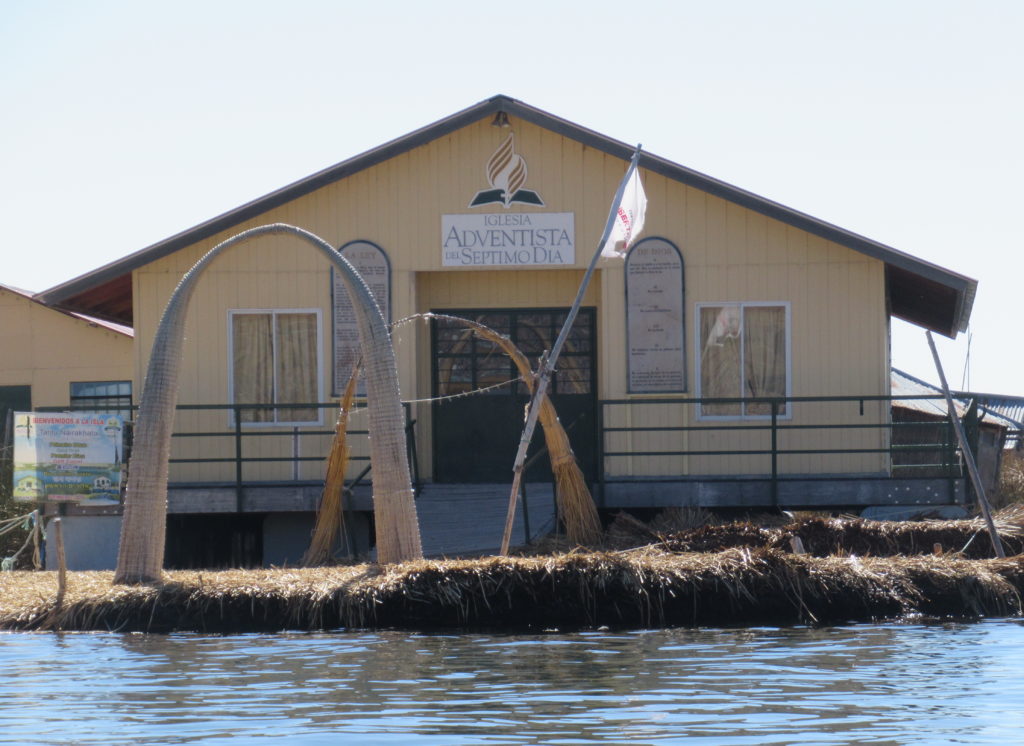
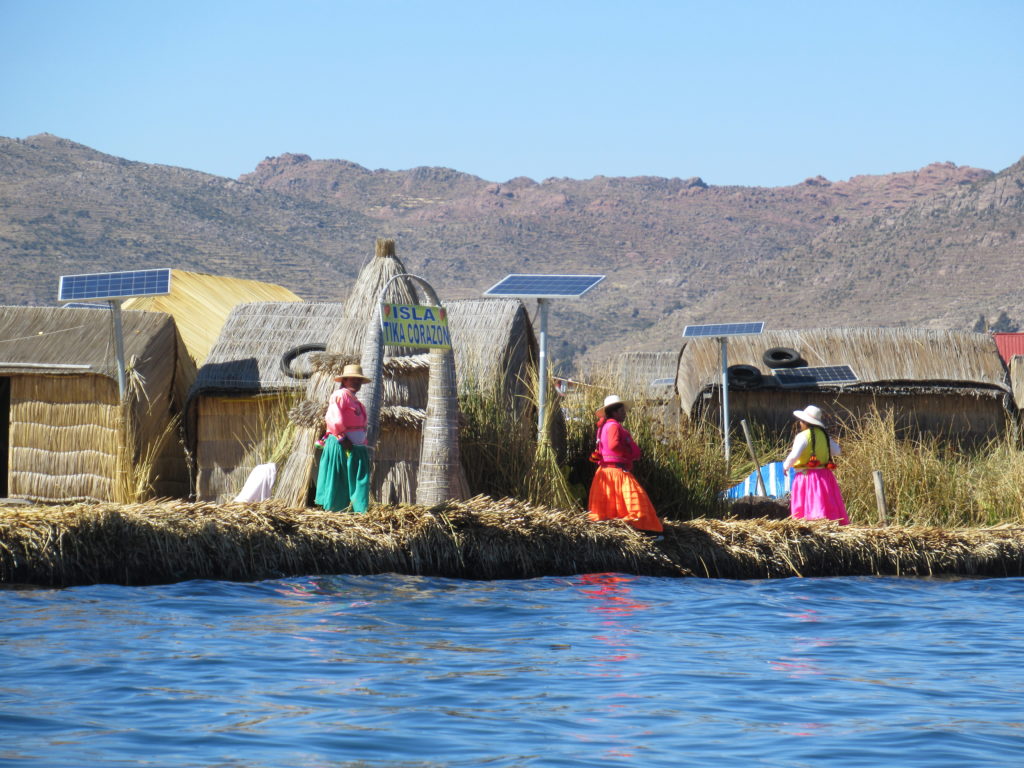
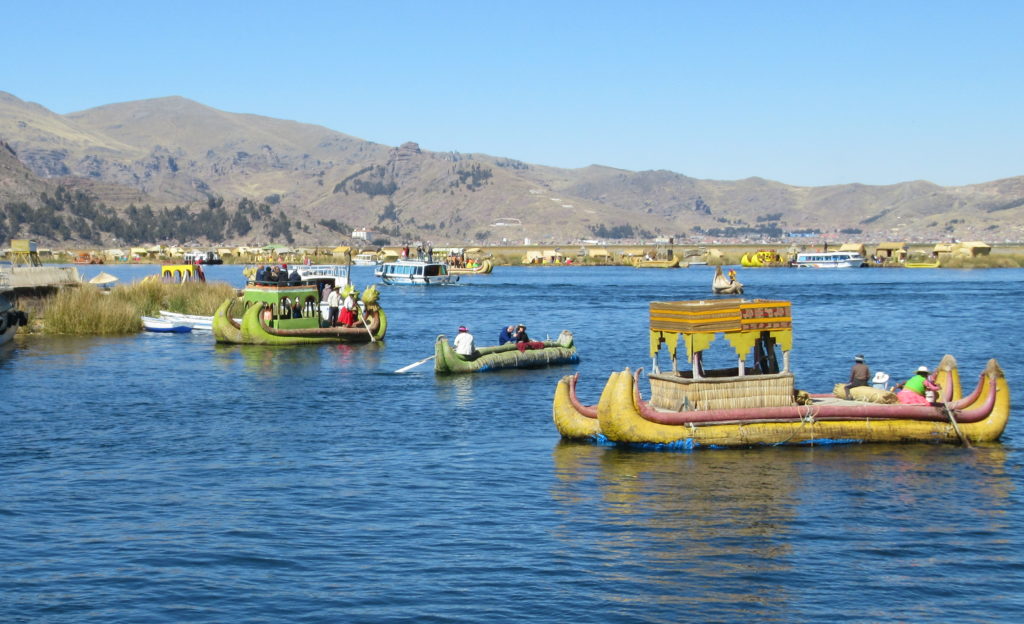
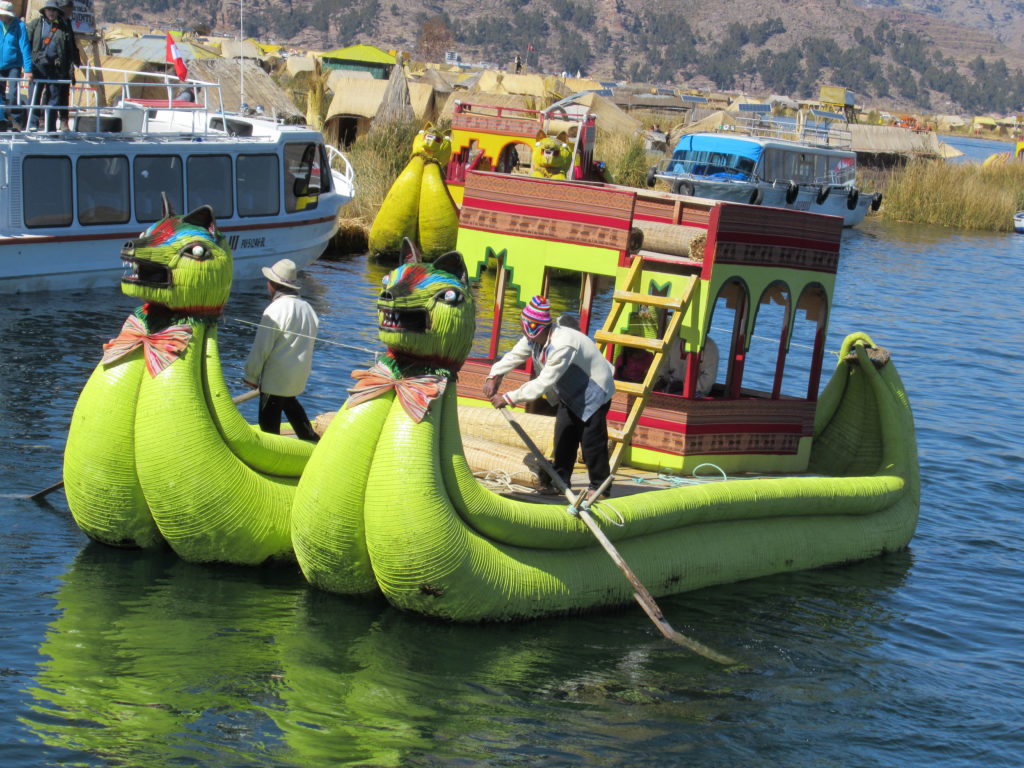
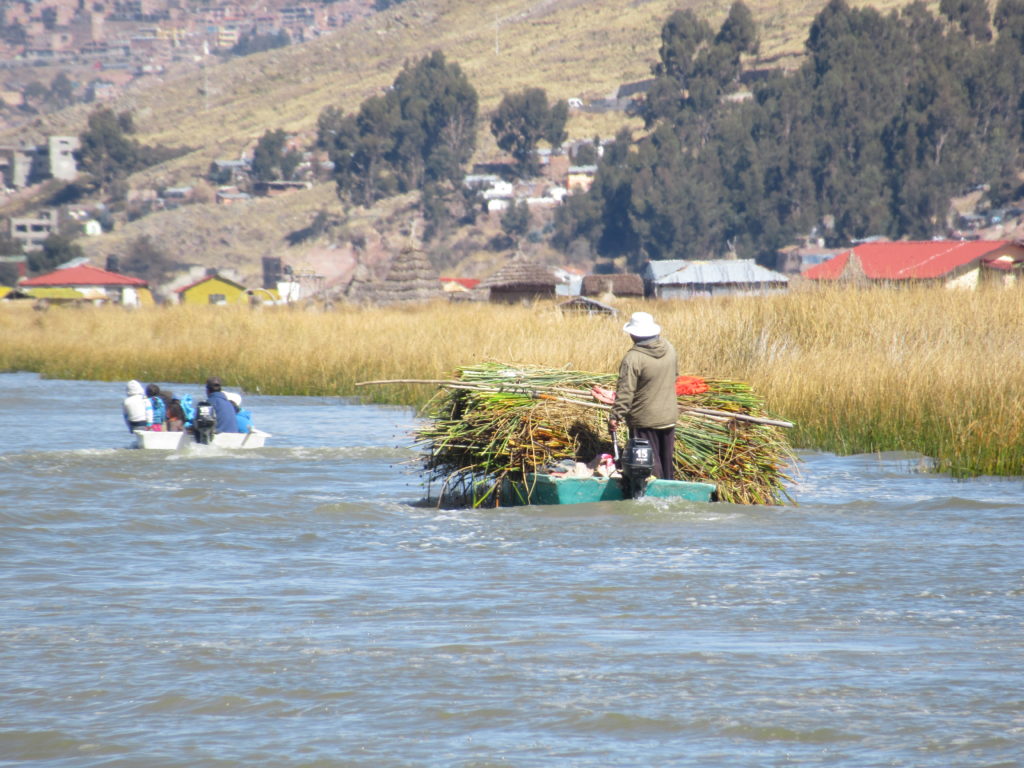
Soon, it was time to leave the floating islands behind and head to Isla Taquile – around 90 minutes away. It was a lovely journey across Lake Titicaca.
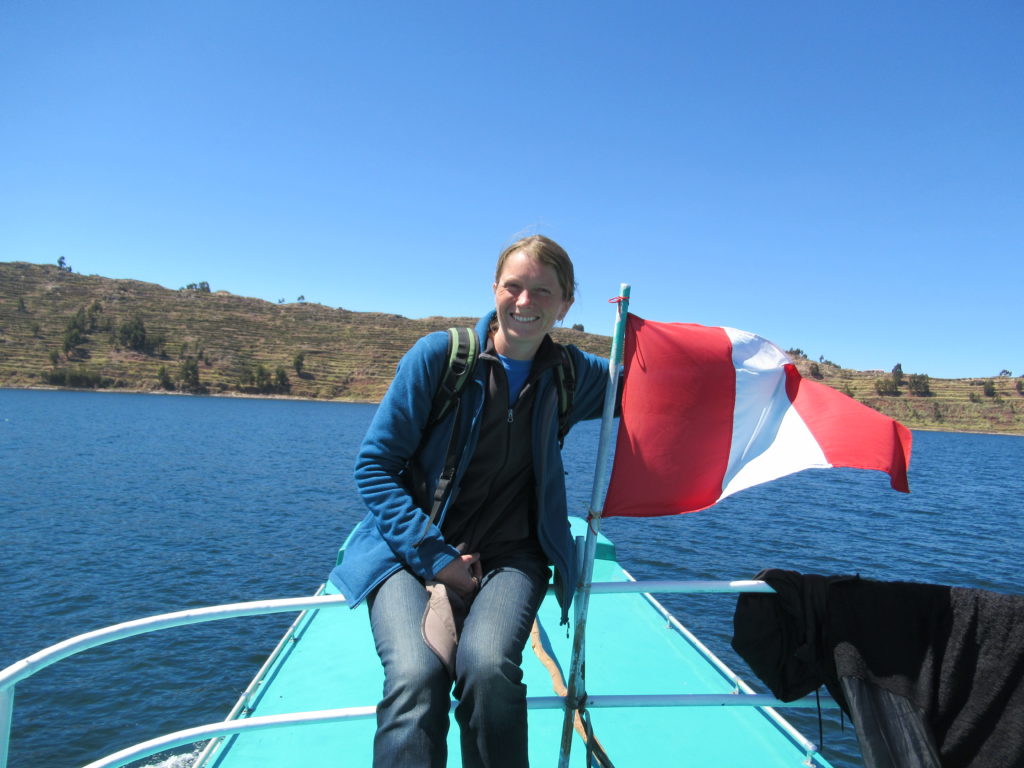
Taquile island is home to around 2000 people, and whereas on the Uros islands the people speak the Aymara language, on Taquile they speak a kind of Quecha – from the same family of languages that the Incas spoke.
The island has no roads or vehicles, and was incredibly peaceful. The people of the island are famous for their traditional handicrafts, and the fact that knitting is only done by males. The community still operates in a very similar way to how it did in Inca times – with farming and the sharing of resources. Of course, now there is an additional income from tourism.
Our visit to the island consisted of a walk along the top of the island to the main village – where we had lunch. This island was a lot less busy than Isla del Sol, and had an amazingly relaxing quality about it. It was also less developed – no restaurants or accommodation as such – all overnight stays on the island are homestays organised via the community.

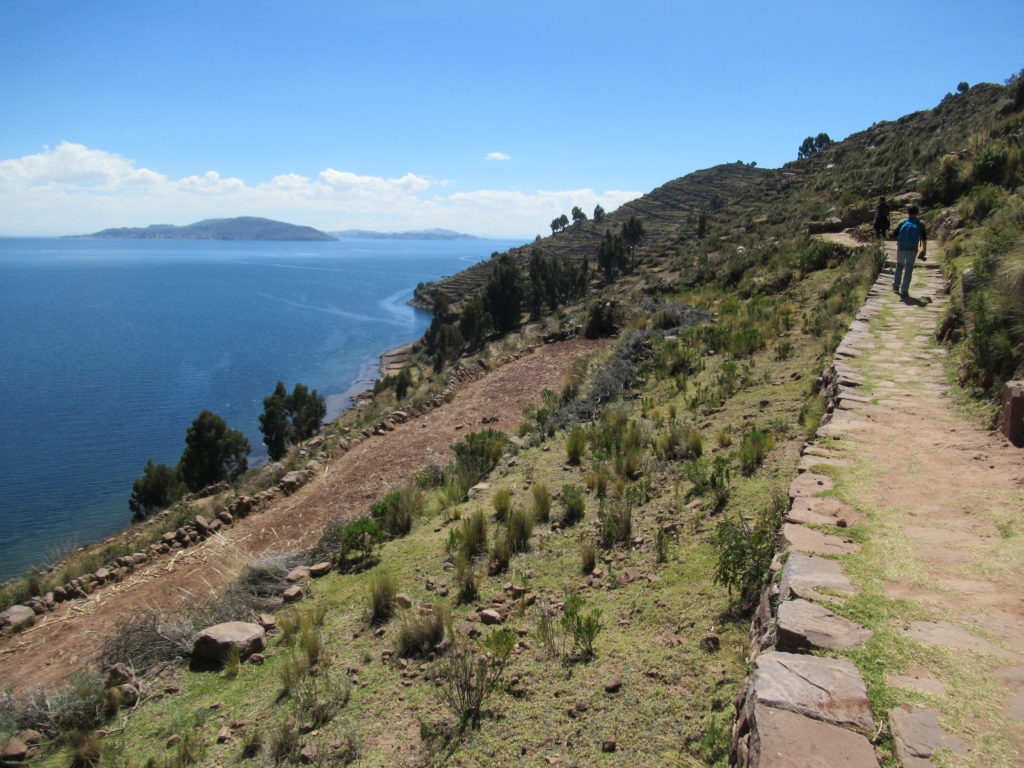
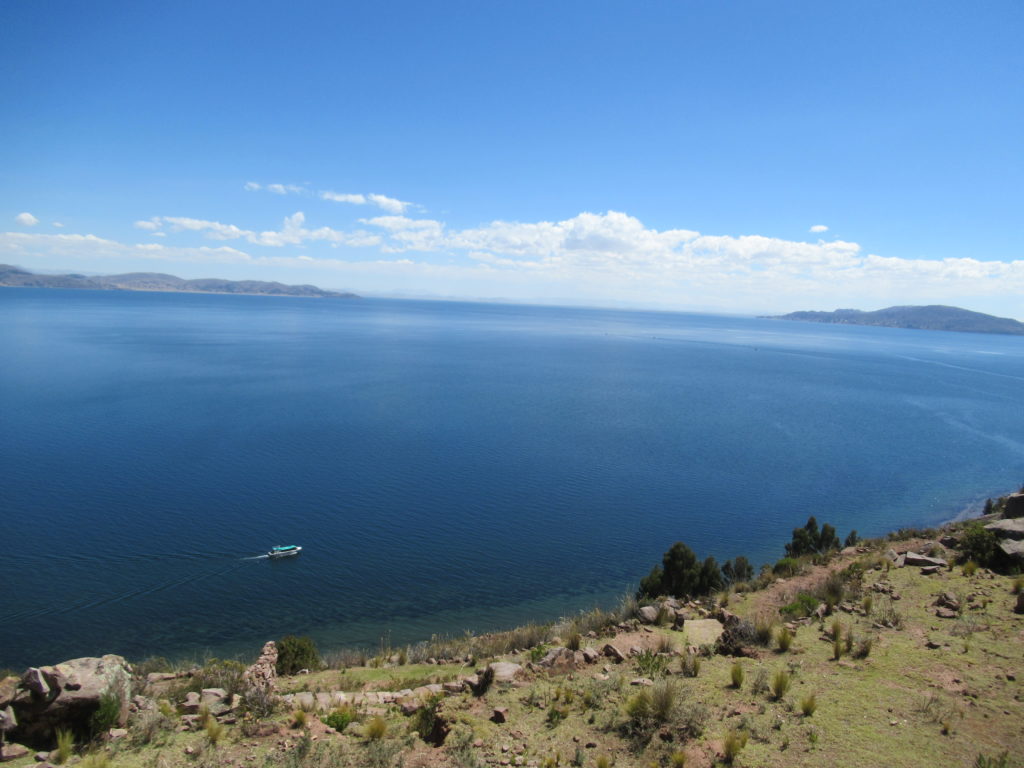
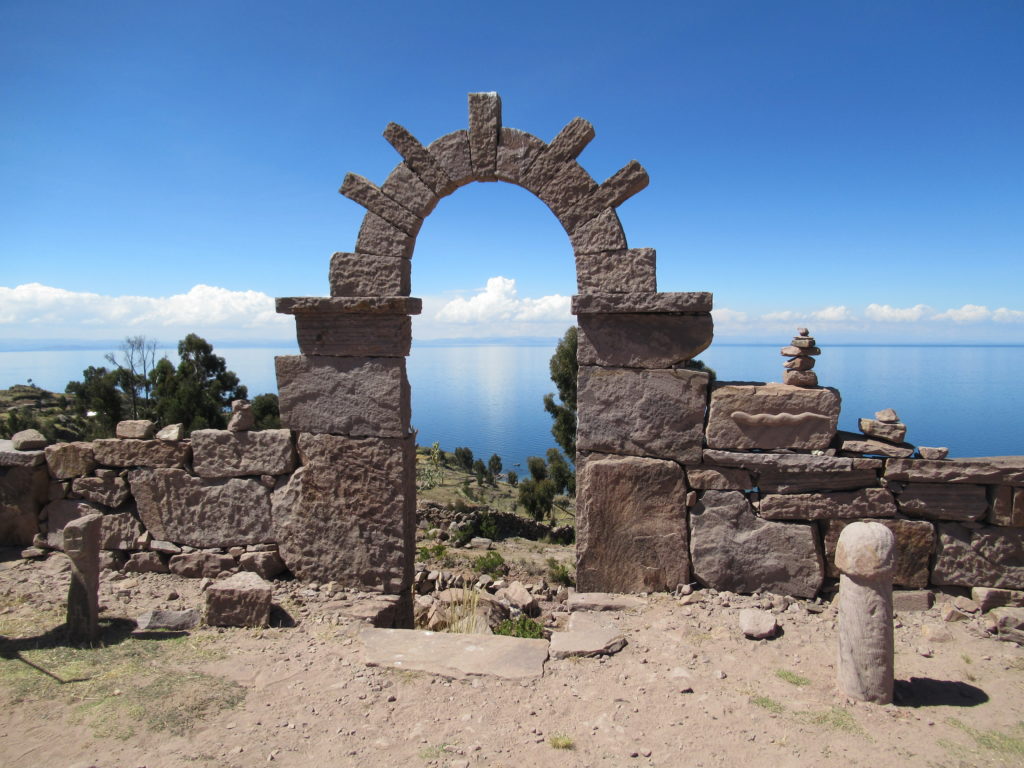
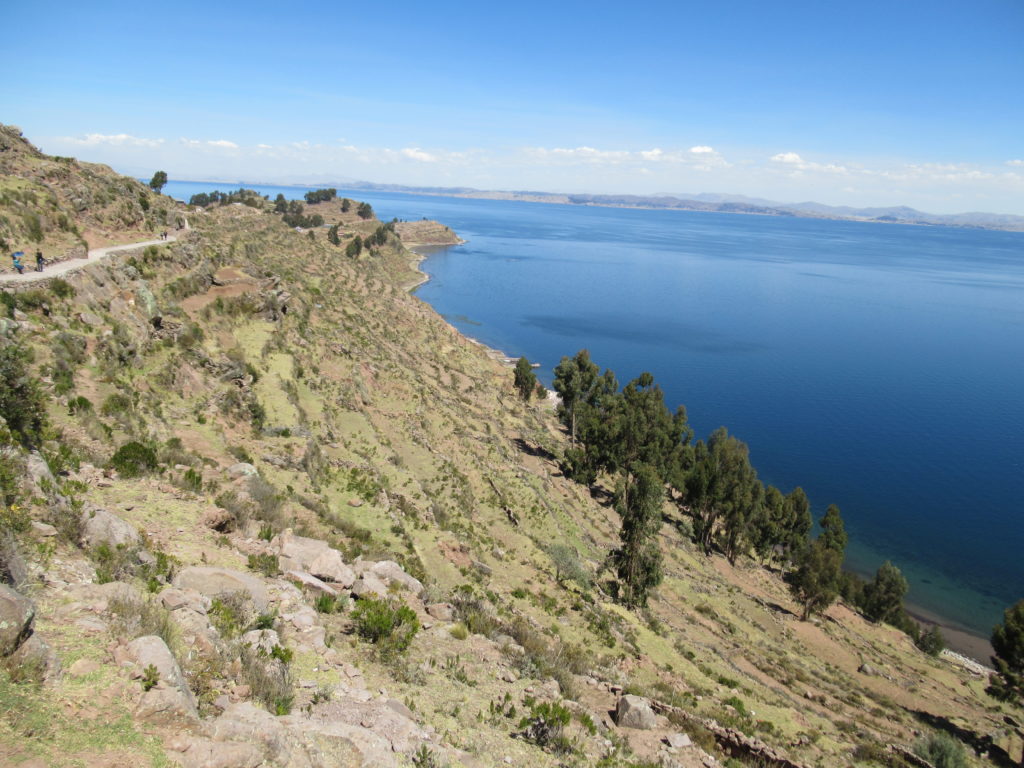
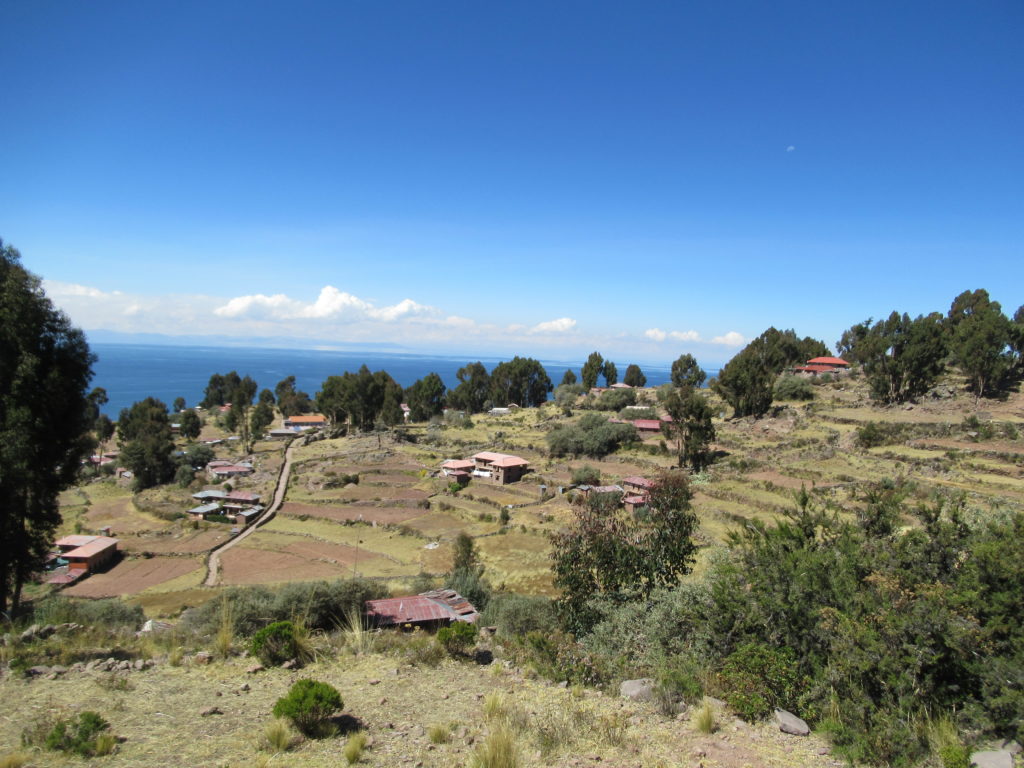
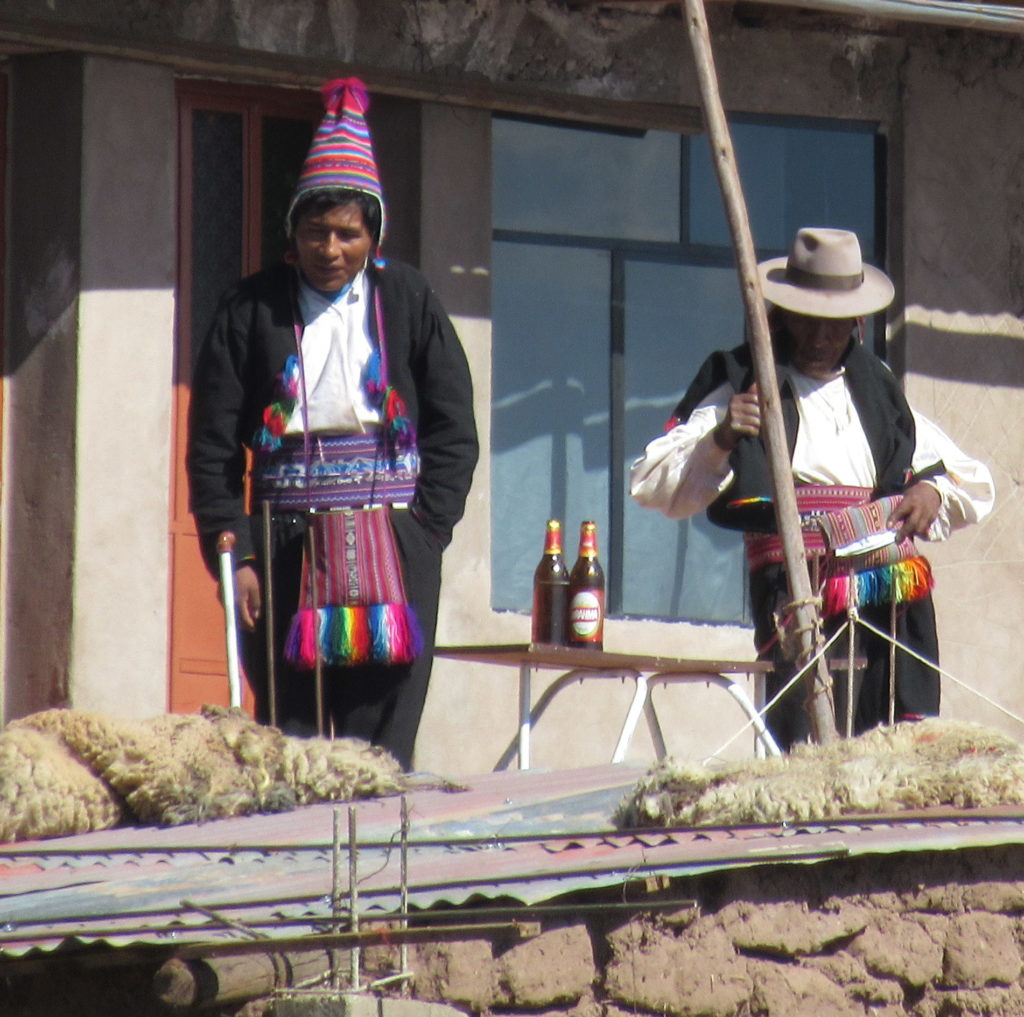
We spent a couple of hours on the island, and it was really interesting and enjoyable – but also very different from the floating islands. We really enjoyed the whole day, and the tour finished with the two and a half hour journey back across the lake to Puno.

